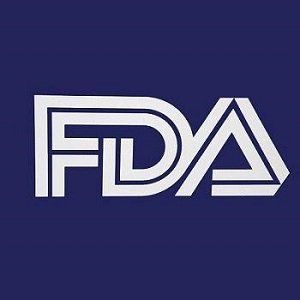Combination Therapy Approved for BRAF V600E Mutated NSCLC
The FDA has approved dabrafenib in combination with trametinib for the treatment of BRAF V600E mutated non-small cell lung cancer.

The U.S. Food and Drug Administration (FDA) is giving the green light to a combination targeted therapy for patients with metastatic non-small cell lung cancer (NSCLC) whose tumors express the BRAF V600E mutation. The FDA approved dabrafenib in combination with trametinib, marking the fourth actionable genomic biomarker in metastatic NSCLC to receive approval. The three others include EGFR, ALK, and ROS-1.
This approval is based on safety and efficacy data from a phase II, three-cohort, multicenter, nonrandomized, noncomparative open-label study of dabrafenib in combination with trametinib in patients with stage IV BRAF V600E mutant NSCLC. The two groups included 36 treatment-naïve patients and 57 who were previously treated with chemotherapy.
Among the 36 treatment-naïve patients receiving 150 mg of dabrafenib twice daily and 2 mg of trametinib once daily, the overall response rate (ORR) was 61%. In the previously treated population receiving the same dosage, there was an ORR of 63%. The median duration of response in the treatment-naïve cohort was not estimable and in the previously treated patient cohort it was 12.6 months.
The most common adverse events (incidence > 20%) were pyrexia, fatigue, nausea, vomiting, diarrhea, dry skin, decreased appetite, edema, rash, chills, hemorrhage, cough, and dyspnea.
The treatment combination was approved along with the next-generation sequencing–based companion diagnostic (Thermo Fisher Scientific’s Oncomine™ Dx Target Test) that identified the BRAF V600E mutation in eligible NSCLC patients. Dabrafenib and trametinib target different kinases within the serine/threonine kinase family in a pathway implicated in NSCLC as well as in melanoma and other cancers. This two-drug combination has been shown to slow tumor growth more than either drug alone. These two agents currently are being investigated in an ongoing clinical trial program in a number of tumor types.
Tracey Evans, MD, associate professor of hematology/oncology at the Abramson Cancer Center in Philadelphia, Pennsylvania, said this approval is good news, but there is still a long way to go. “It is applicable to only a very small fraction of lung cancer patients, and this does not represent a cure. It is just a further recognition that not all lung cancers are the same, and it is critically important to test all nonsquamous lung cancers for so-called driver mutations and translocations that we can target with oral medications,” Dr. Evans told OncoTherapy Network.
Dr. Evans said the most common such mutation is EGFR, which is found in about 10% of nonsquamous lung cancers, followed by ALK, which is found in 3% to 7% of nonsquamous lung cancers. In addition, there are other more rare mutations and translocations such as ROS1, RET, cMet, and BRAF V600E, all of which now have treatment approaches beyond standard cytotoxic chemotherapy and immunotherapy, noted Dr. Evans. BRAF mutations appear in approximately 1% to 3% of NSCLC cases.